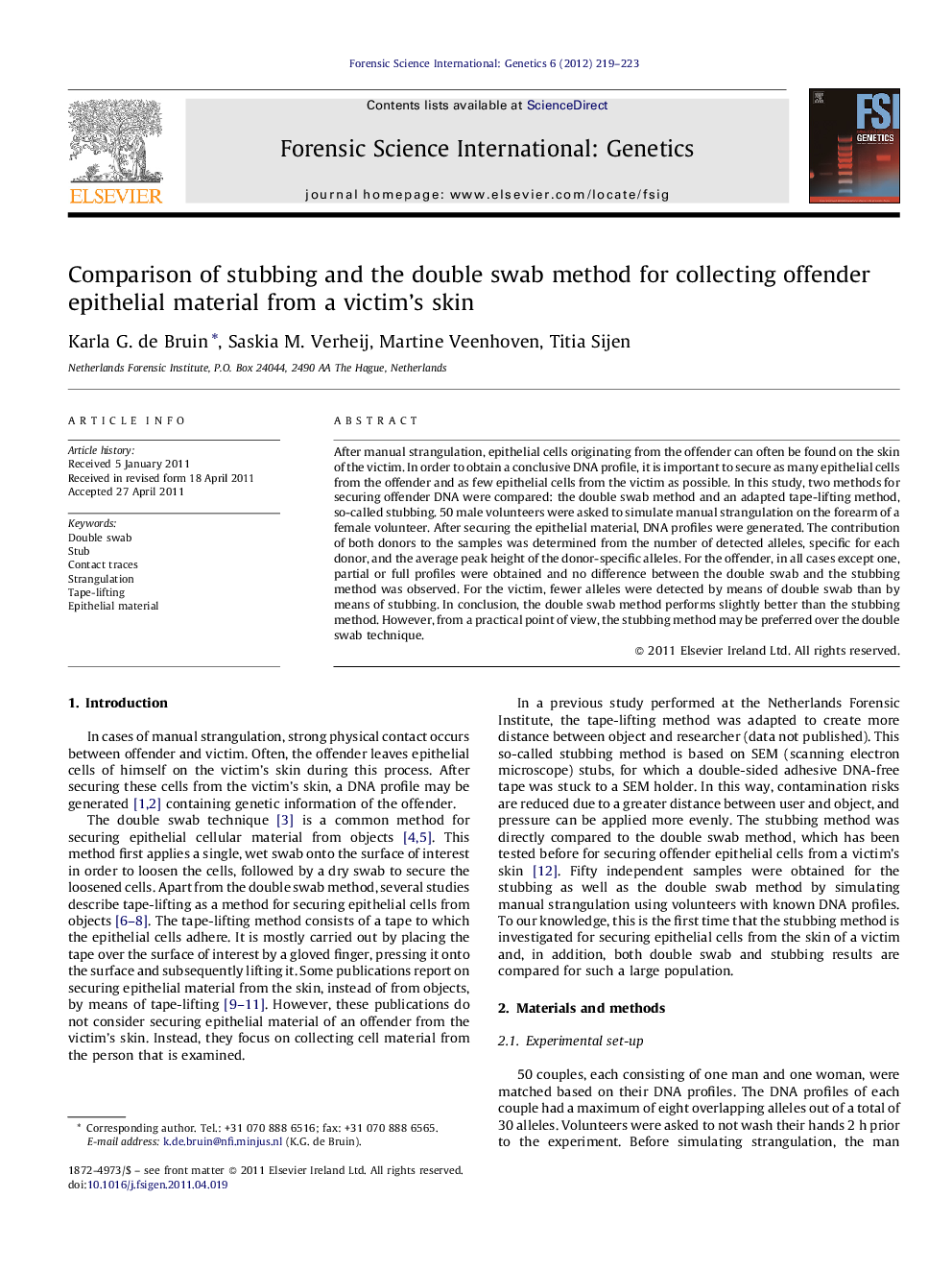| Article ID | Journal | Published Year | Pages | File Type |
|---|---|---|---|---|
| 10254069 | Forensic Science International: Genetics | 2012 | 5 Pages |
Abstract
After manual strangulation, epithelial cells originating from the offender can often be found on the skin of the victim. In order to obtain a conclusive DNA profile, it is important to secure as many epithelial cells from the offender and as few epithelial cells from the victim as possible. In this study, two methods for securing offender DNA were compared: the double swab method and an adapted tape-lifting method, so-called stubbing. 50 male volunteers were asked to simulate manual strangulation on the forearm of a female volunteer. After securing the epithelial material, DNA profiles were generated. The contribution of both donors to the samples was determined from the number of detected alleles, specific for each donor, and the average peak height of the donor-specific alleles. For the offender, in all cases except one, partial or full profiles were obtained and no difference between the double swab and the stubbing method was observed. For the victim, fewer alleles were detected by means of double swab than by means of stubbing. In conclusion, the double swab method performs slightly better than the stubbing method. However, from a practical point of view, the stubbing method may be preferred over the double swab technique.
Keywords
Related Topics
Life Sciences
Biochemistry, Genetics and Molecular Biology
Genetics
Authors
Karla G. de Bruin, Saskia M. Verheij, Martine Veenhoven, Titia Sijen,
